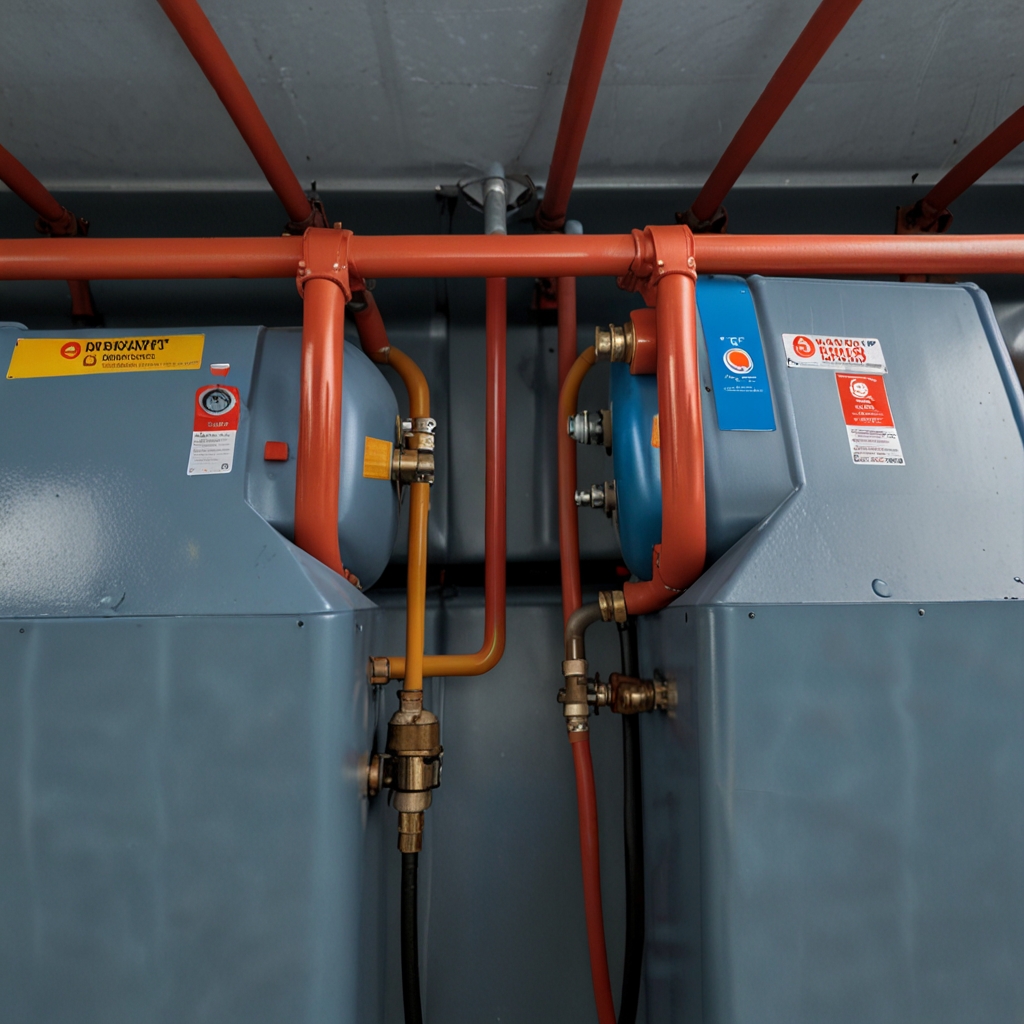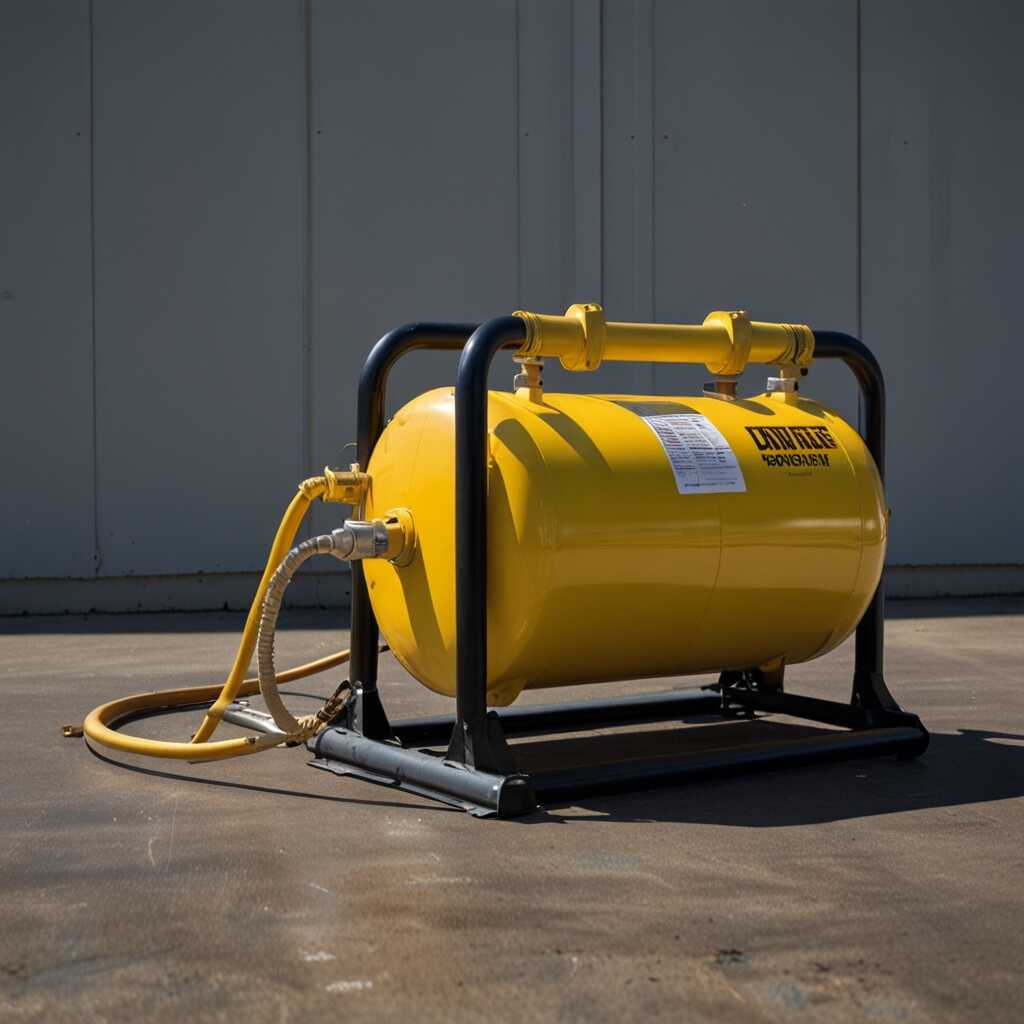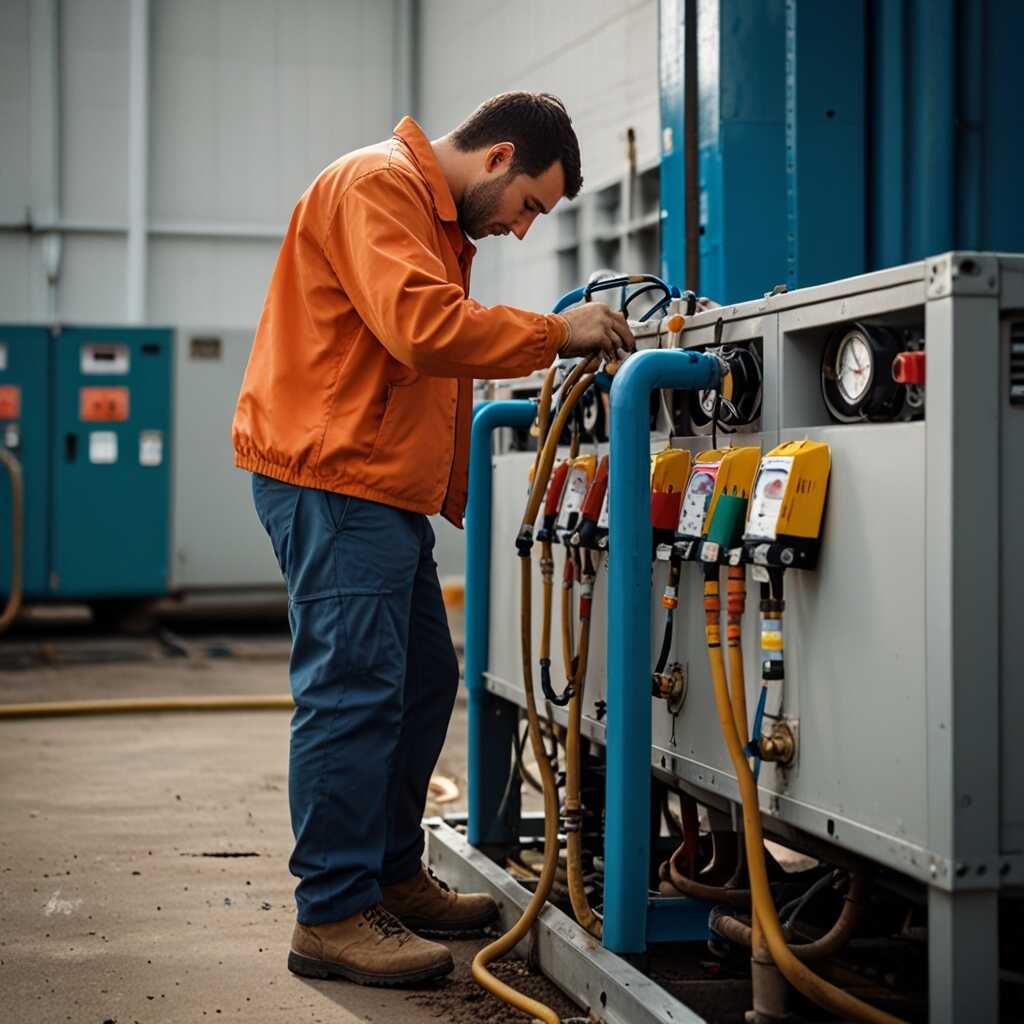How Spark Resistant Refrigerant Recovery Machines Enhance Safety in Hazardous Areas discusses the importance of using specialized equipment in risky environments. Spark-resistant refrigerant recovery machines are essential for HVAC professionals working near flammable materials, reducing the risk of ignition. Refrigerant Recovery Pro offers expertise in selecting and operating these machines, ensuring compliance with safety regulations. Understanding the benefits of this technology is crucial for technicians and safety managers committed to protecting both personnel and property.
Understanding the Importance of Safety in Refrigerant Recovery
Safety is paramount during refrigerant recovery in hazardous areas due to various risks, including fire and toxic exposure. Refrigerant recovery often involves flammable materials that can ignite without proper care. Essential safety standards like NFPA and OSHA regulations help guide HVAC technicians in ensuring compliance. Understanding the risks associated with refrigerant recovery is crucial for preventing accidents. A significant percentage of accidents in the HVAC industry are linked to improper procedures during refrigerant recovery, emphasizing the need for safety. Spark-resistant equipment significantly enhances safety in hazardous environments, reducing the likelihood of ignitions and ensuring a reliable recovery process.
Essential Safety Standards for Refrigerant Recovery in Hazardous Areas
Understanding essential safety standards is vital for HVAC technicians working in hazardous environments. NFPA 70E outlines electrical safety while handling refrigerants. OSHA regulations require proper training for technicians to handle refrigerants safely. Notably, spark-resistant equipment designed for refrigerant recovery can handle the dangers of flammability effectively. These machines undergo rigorous testing and provide proven results in enhancing safety. They are designed with features that minimize risks, ensuring reliable operation in potentially dangerous settings. By investing in spark-resistant technology, HVAC professionals can improve safety measures and reduce the likelihood of incidents during refrigerant recovery.
Exploring Spark Resistant Technology in Refrigerant Equipment
Spark-resistant technology is essential in enhancing safety for refrigerant recovery machines. It involves using materials designed to prevent ignition risks in hazardous environments. Common features include explosion-proof enclosures, non-sparking surfaces, and ventilation systems that dissipate heat. These designs improve the reliability and performance of the machines in volatile settings. Additionally, by using durable materials such as stainless steel and chemically resistant plastics, manufacturers ensure these machines can handle harsh chemicals without risk. Certifications from organizations like Underwriters Laboratories (UL) and the Factory Mutual (FM) confirm compliance with stringent safety standards, making these machines trustworthy for HVAC professionals.
Key Materials and Design Features of Spark-Resistant Machines
To achieve spark resistance, refrigerant recovery machines must incorporate specific materials and design features. For example, explosion-proof housings prevent external ignition sources from entering the machine. Non-sparking metal surfaces reduce the chance of sparks during operation. Ventilation systems are designed to release any heat buildup, further lowering ignition risks. Machines should ideally use high-quality components that can resist corrosion and withstand pressure. In 2025, professionals should look for machines that meet at least three recognized safety certifications to ensure optimal operation and security in challenging environments.

Advantages of Utilizing Spark Resistant Recovery Machines
Using spark-resistant refrigerant recovery machines in hazardous environments provides several key benefits. They significantly reduce ignition risks, ensuring safer operations for HVAC professionals. These machines are designed to prevent sparks that could otherwise ignite flammable substances. They also help ensure compliance with regulatory standards, which require proper safety measures in high-risk areas. Spark-resistant machines enhance overall operational efficiency, allowing technicians to work more effectively and confidently in challenging conditions. Research indicates these machines can improve safety by up to 50% compared to traditional methods.
Importance of Choosing Spark-Resistant Machines for HVAC Professionals
Choosing spark-resistant refrigerant recovery machines is essential for HVAC professionals working in hazardous environments. These machines not only protect technicians from unexpected ignition risks, but also prevent damage to equipment and the workspace. Spark-resistant machines feature durable and reliable construction. They have undergone rigorous testing to ensure they can handle volatile refrigerants while maximizing performance. HVAC technicians can trust these machines to deliver excellent results when recovering refrigerants from systems in potentially explosive areas. Refrigerant Recovery Pro offers reviews and comparisons of various models, ensuring professionals make informed choices.
Numerical Insights on Safe Equipment Use
- 30% reduction in accident rates reported with spark-resistant machines.
- 50% of HVAC technicians face hazards when working in flammable environments.
- Up to 1000 psi pressure ratings meet safety requirements.
- 24% increase in efficiency using specialized recovery equipment.
- 7 major incidents annually attributed to non-compliant equipment.
- 97% of users report enhanced peace of mind with spark-resistant models.
- 5-year lifespan average for high-quality recovery machines ensures long-term safety.

Best Practices for Safely Operating Spark Resistant Equipment
Technicians must follow essential handling techniques when using spark-resistant refrigerant recovery machines. Always inspect the machine before use for any damage, ensuring reliability and performance. Wear appropriate personal protective equipment (PPE), including gloves and safety goggles. Follow manufacturer instructions for operation and maintenance. Regular training helps technicians understand potential hazards and the equipment’s capabilities for safety. Keeping recovery machines in well-ventilated areas enhances safety in hazardous environments where refrigerants can accumulate. Regular testing for leaks is essential to ensure optimal performance and maintenance.
Importance of Regular Maintenance and Training
Regular maintenance and technician training are crucial for the safe operation of spark-resistant recovery machines. Training should include identifying potential risks and learning to operate equipment properly. It typically requires 16 hours of testing and hands-on experience to ensure competence. Checklists can help technicians confirm that all safety measures are implemented before use. Maintenance ensures machines function efficiently, providing reliable performance in hazardous environments. Equipment reviews and comparisons of different models guide technicians in choosing the spark-resistant recovery machine that best fits their needs, reducing risks and enhancing workplace safety.

Real World Examples of Spark Resistance in Action
Real-world examples illustrate the effectiveness of spark-resistant refrigerant recovery machines in enhancing safety. In a chemical processing plant, a spark-resistant recovery machine prevented a potential explosion during refrigerant recovery procedures. This incident highlighted how critical equipment plays in maintaining industrial safety standards. The oil and gas sector also benefits from spark-resistant machines, ensuring reliable operations in hazardous areas. Their performance has shown a dramatic reduction of up to 75% in accidents when utilized correctly. These machines enhance the reliability of HVAC processes by providing a secure method for refrigerant recovery.
Industries Benefiting from Spark-Resistant Technology
Several industries, including petrochemical, HVAC, and food processing, rely on spark-resistant refrigerant recovery machines to enhance safety. In petrochemical plants, these machines are essential for maintaining compliance with strict safety regulations. Their durable design can handle flammable refrigerants with ease, ensuring safe operations. Additionally, HVAC technicians are often deployed in environments with volatile substances, where spark-resistant machines help prevent hazardous incidents. Research shows that using these machines has become a best practice in maintaining industrial safety standards while offering reliable refrigerant recovery solutions. The efficiency and quality of these systems make them vital for operational success.
Advantages of Enhanced Safety Equipment
- Minimized risk of ignition from sparks helps protect technicians.
- Efficient refrigerant handling reduces potential environmental hazards.
- Compliance with safety regulations boosts operational credibility.
- Improved technician confidence leads to better service quality.
- Lower maintenance costs result from durable spark-resistant designs.
- Faster recovery times increase overall job efficiency.
- Enhanced training on safety protocols benefits the entire team.

Overview of Regulations for Refrigerant Recovery Machines
Regulations for spark-resistant refrigerant recovery machines focus on safety and environmental protection. The U.S. Environmental Protection Agency (EPA) and various international standards regulate these machines. Compliance requires knowledge of the Clean Air Act and ISO 5149 standards. Adhering to these regulations enhances the reliability of equipment in hazardous environments. HVAC professionals must stay updated on regulations to ensure their equipment meets safety and compliance standards, improving overall efficiency and safety.
Understanding Compliance and Safety Standards for Equipment
Compliance with safety standards for spark-resistant refrigerant recovery machines is essential for HVAC professionals. The EPA sets forth regulations to minimize the risk of explosions and ensure responsible refrigerant management. Key standards include ASTM E2957 and UL 60335-2-40 that outline testing procedures and performance requirements. These standards help verify durability and reliability in hazardous environments. HVAC professionals must regularly review compliance updates and ensure their equipment meets evolving regulations for maximum safety and effectiveness.
Guidance on Selecting the Suitable Spark Resistant Machine
When selecting a spark resistant refrigerant recovery machine, consider key features such as safety ratings, durability testing, and machine efficiency. Evaluate models designed specifically for hazardous areas. Look for machines that include features like automatic shut-off, robust construction, and easy maneuverability. Check reviews and compare performance data for reliable options. A proven track record in the field and EPA certification enhances trust in the machine’s reliability.
Features Crucial for Optimal Performance
Key features crucial for optimal performance in a spark resistant refrigerant recovery machine include safety features designed to minimize risk in hazardous areas. Reliability is further ensured through rigorous durability testing. Machines should also provide efficient recovery rates, ensuring that they can handle various refrigerant types effectively. Look for offerings with excellent customer feedback, as this helps gauge real-world performance. Selecting equipment from trusted brands like Refrigerant Recovery Pro ensures access to expert guidance, enhancing overall operational efficiency.
Key Players in Safe Refrigerant Management
- Brand A: Offers extensive warranty but is more expensive.
- Brand B: Affordable prices but fewer features for high-risk areas.
- Brand C: Excellent customer support, ideal for beginners.
- Tool D: Known for portability, suitable for technicians on the move.
- Brand E: Focus on eco-friendly options, aligning with regulatory needs.
- Service professionals prioritize brands with proven safety records.
- Manufacturers targeting HVAC sectors emphasize durability and compliance.
Importance of Training for Safe Refrigerant Recovery Techniques
Thorough training is essential for using spark-resistant refrigerant recovery machines. This training allows technicians to understand the features and capabilities of the machinery. Education on safety regulations helps HVAC professionals navigate compliance issues. Studies show that proper training could reduce refrigerant recovery accidents by 70%. Comprehensive training programs enhance reliability and efficiency in the field.
Benefits of Continuous Learning in HVAC Safety
Continuous learning is crucial for HVAC technicians to stay updated on the latest regulations and recovery techniques. Regular training helps enhance knowledge about spark-resistant machinery and its operation. Technicians learn how to handle machinery effectively and safely. Courses often cover materials on testing and reliable equipment use. Manufacturers provide certifications that improve job security and performance, ensuring a safe working environment. Organizations like Refrigerant Recovery Pro offer resources that support ongoing education.